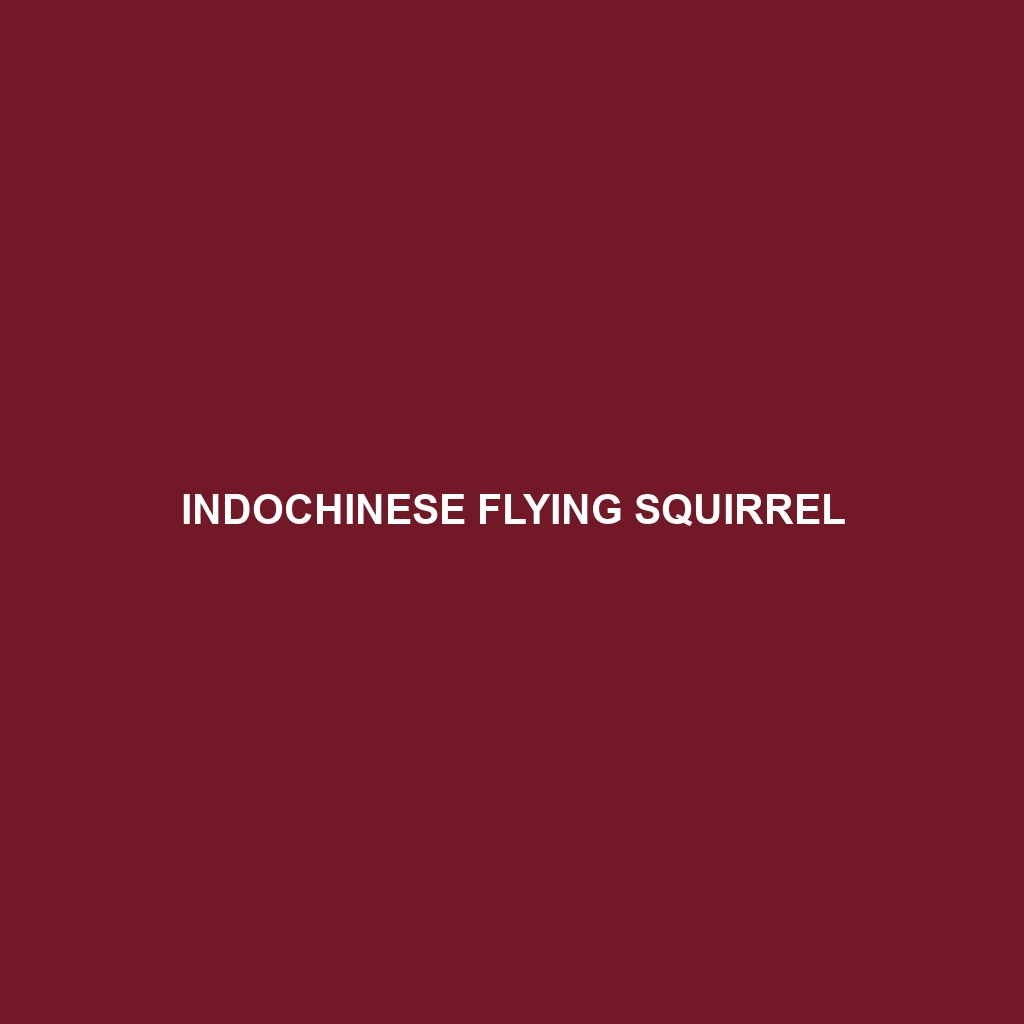Indochinese Flying Squirrel
Common Name: Indochinese Flying Squirrel
Scientific Name: Biswamoyopterus biswasi
Habitat
The Indochinese Flying Squirrel primarily resides in the dense forests of Southeast Asia, particularly found in countries such as Laos, Vietnam, and Thailand. It favors tropical and subtropical forest environments, often inhabiting mountainous regions with ample tree cover to facilitate its gliding abilities. These habitats provide the necessary vertical space and foliage for both shelter and foraging.
Physical Characteristics
Indochinese Flying Squirrels are medium-sized mammals, typically measuring between 30 to 40 centimeters (12 to 16 inches) in body length, excluding the tail, which can add an additional 30 centimeters. Their fur is commonly a mix of gray and brown, providing excellent camouflage against the tree bark. One of their most distinctive features is the large patagium, a membrane stretched from their forelimbs to their hind limbs, which enables gliding through the forest canopy. They also possess large eyes that aid nocturnal navigation and excellent hearing.
Behavior
Indochinese Flying Squirrels are predominantly nocturnal, showcasing unique behaviors that contribute to their survival. They are social creatures, often found in small groups. Their gliding ability allows them to travel distances of up to 150 meters (approximately 490 feet) between trees, facilitating both foraging and escape from predators. They communicate through a series of chirps and whistles, especially during mating season and when establishing territory.
Diet
The diet of the Indochinese Flying Squirrel consists mainly of fruits, nuts, and leaves, which they forage for among the high canopies of their forest habitats. They are particularly fond of the fruits of various tree species, which provide essential nutrients. Their habit of feeding at night allows them to take advantage of the abundance of fruits that ripen during this time.
Reproduction
The breeding season for the Indochinese Flying Squirrel typically occurs annually, often during the warmer months when food is abundant. After a gestation period of about 60 days, females give birth to one or two offspring. The young are born with their eyes closed and rely heavily on their mother’s care for the initial weeks, during which they develop essential survival skills. Maternal care is crucial, and mothers often create nesting sites in tree hollows to protect their young.
Conservation Status
The Indochinese Flying Squirrel is currently classified as ‘Vulnerable’ by the IUCN Red List. Habitat loss due to deforestation and illegal wildlife trade poses significant threats to their population. Conservation efforts are essential to protect their natural habitats and ensure the survival of this species in the wild.
Interesting Facts
– The Indochinese Flying Squirrel is known for its ability to soar gracefully between trees, using its gliding membrane to control its descent and direction.
– They have a rich cultural significance in some regions and are often featured in local folklore, symbolizing agility and the spirit of the forest.
Role in Ecosystem
Indochinese Flying Squirrels play a crucial role in their ecosystem as seed dispersers, aiding in forest regeneration by consuming fruits and excreting seeds at various locations. Their activities support the growth of diverse plant species, which in turn benefits various wildlife populations. By maintaining the health of their habitat, they contribute to the overall biodiversity of Southeast Asian forests.
